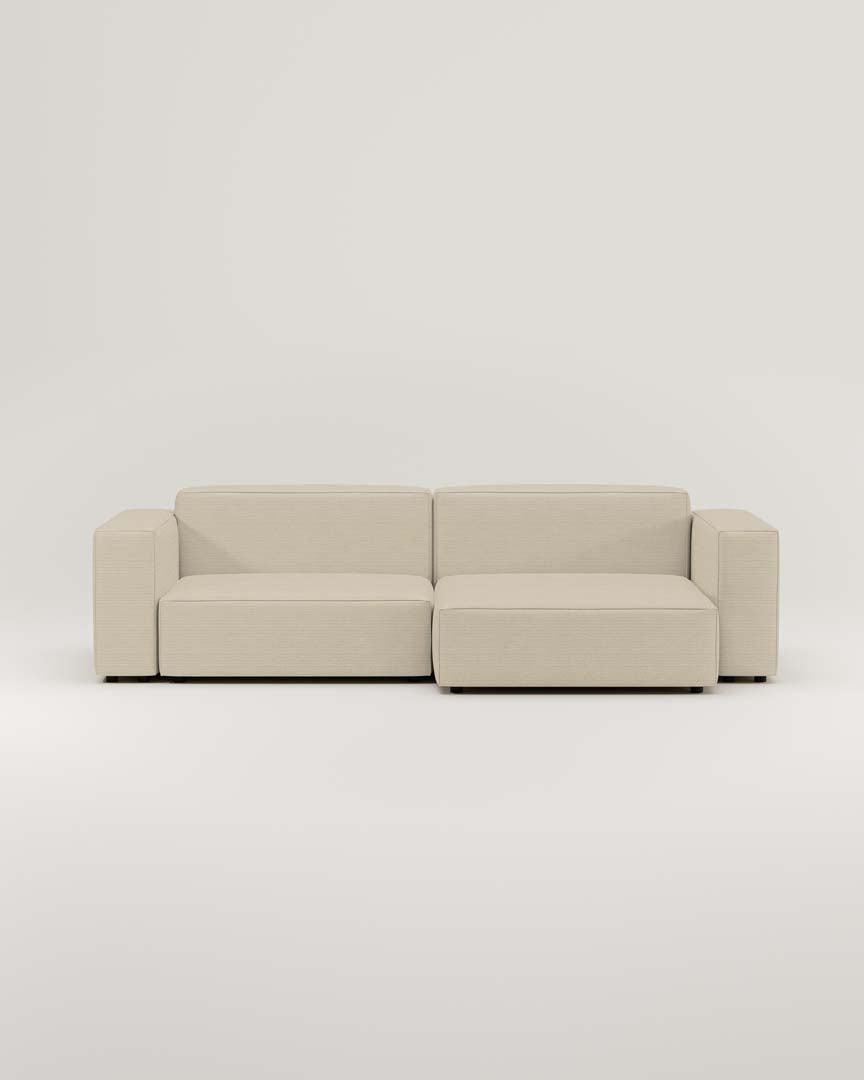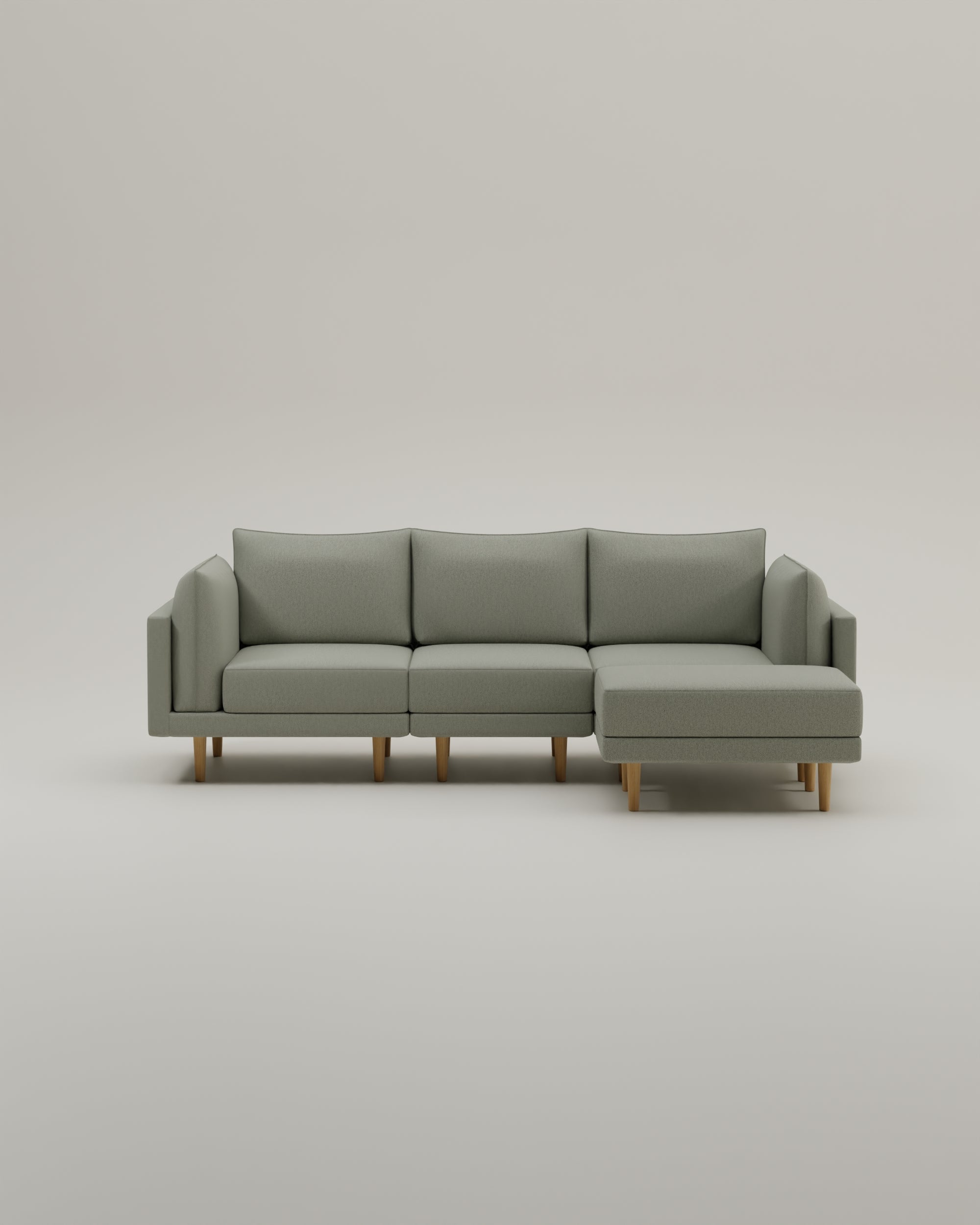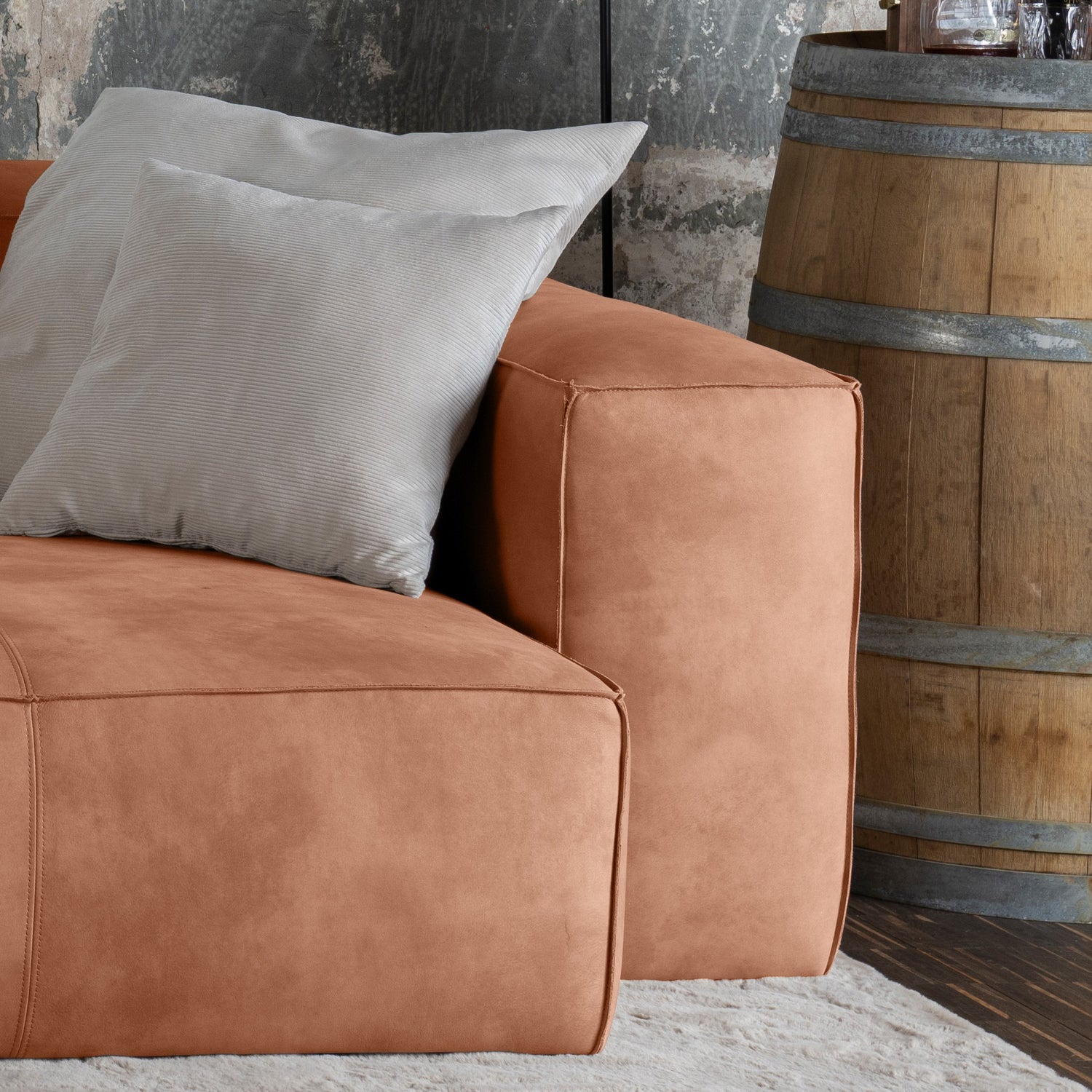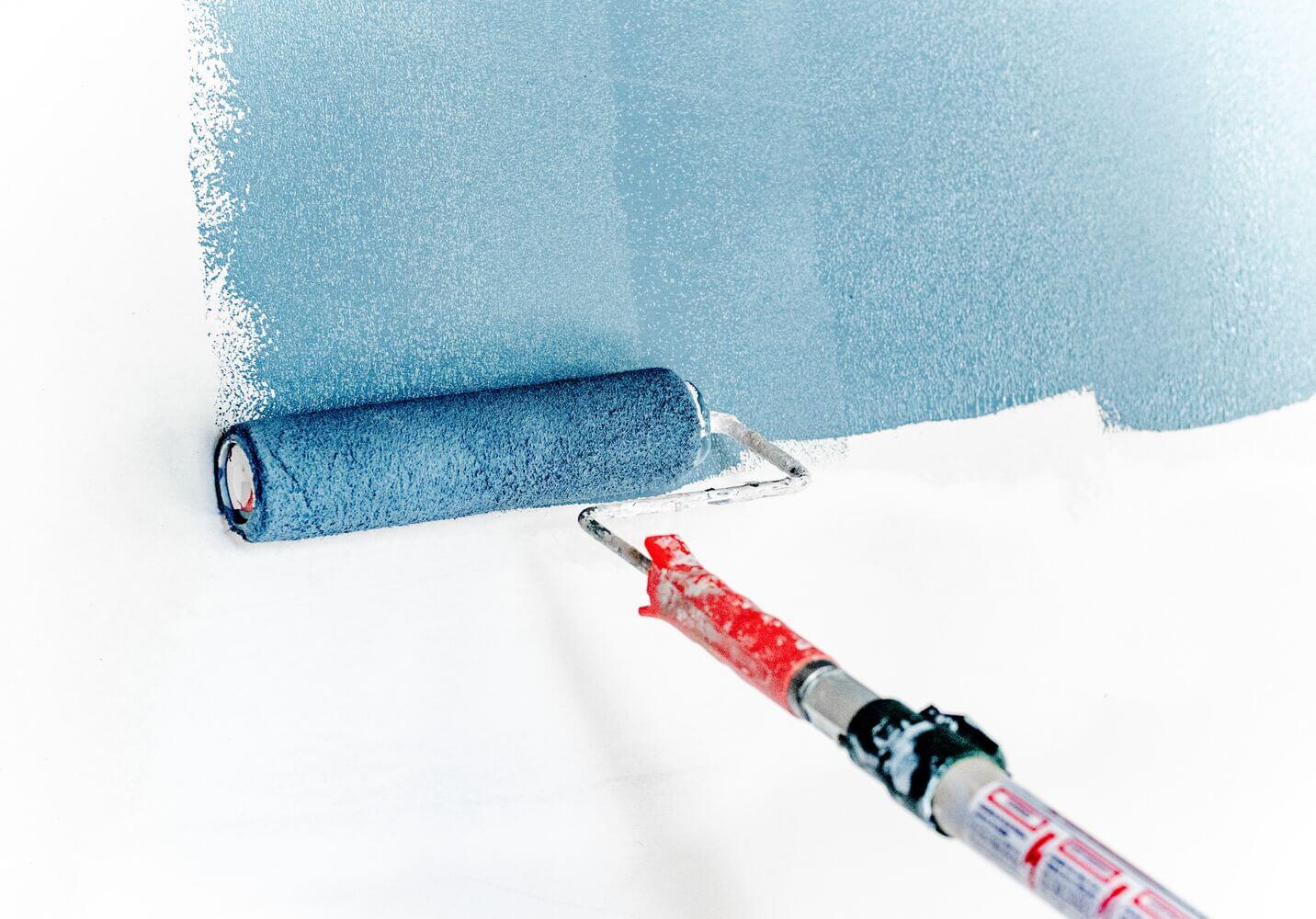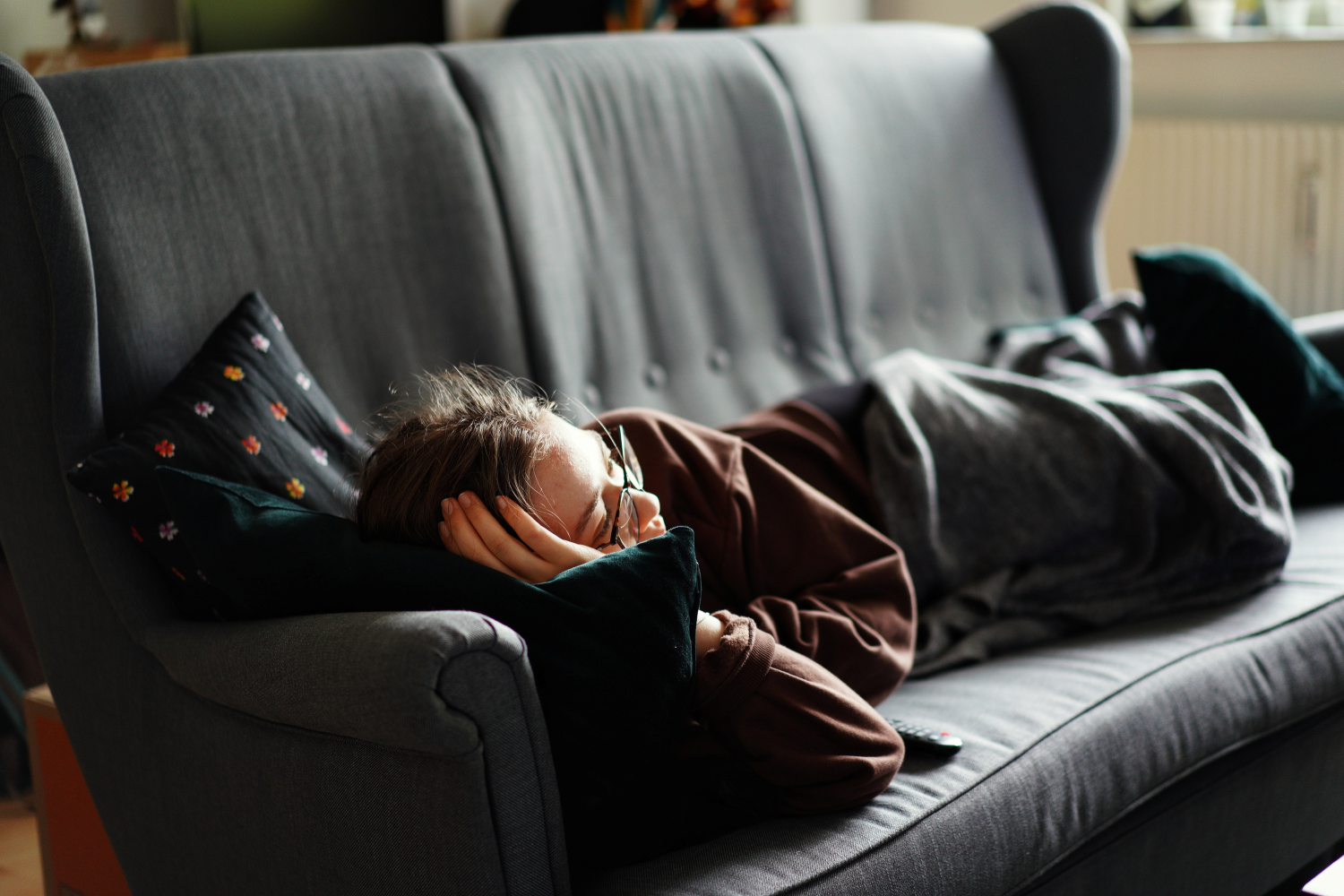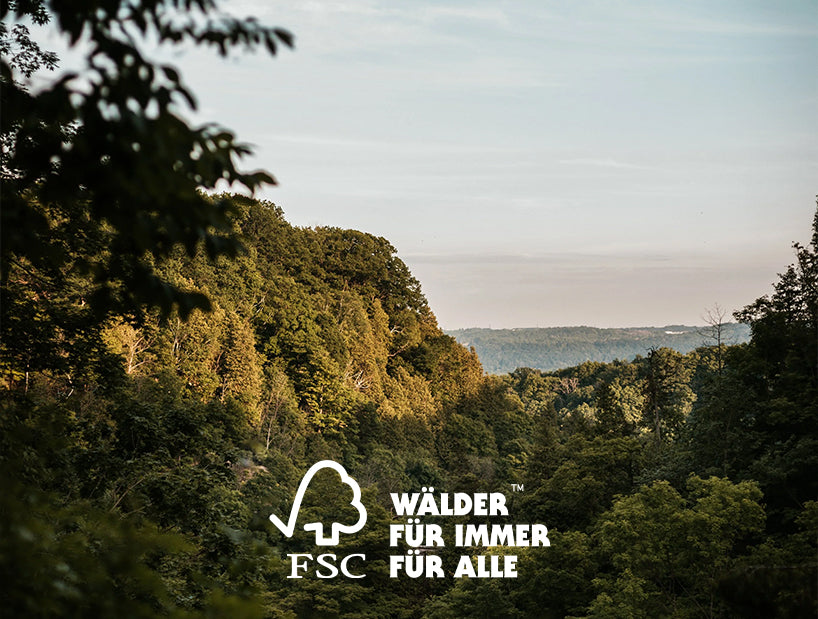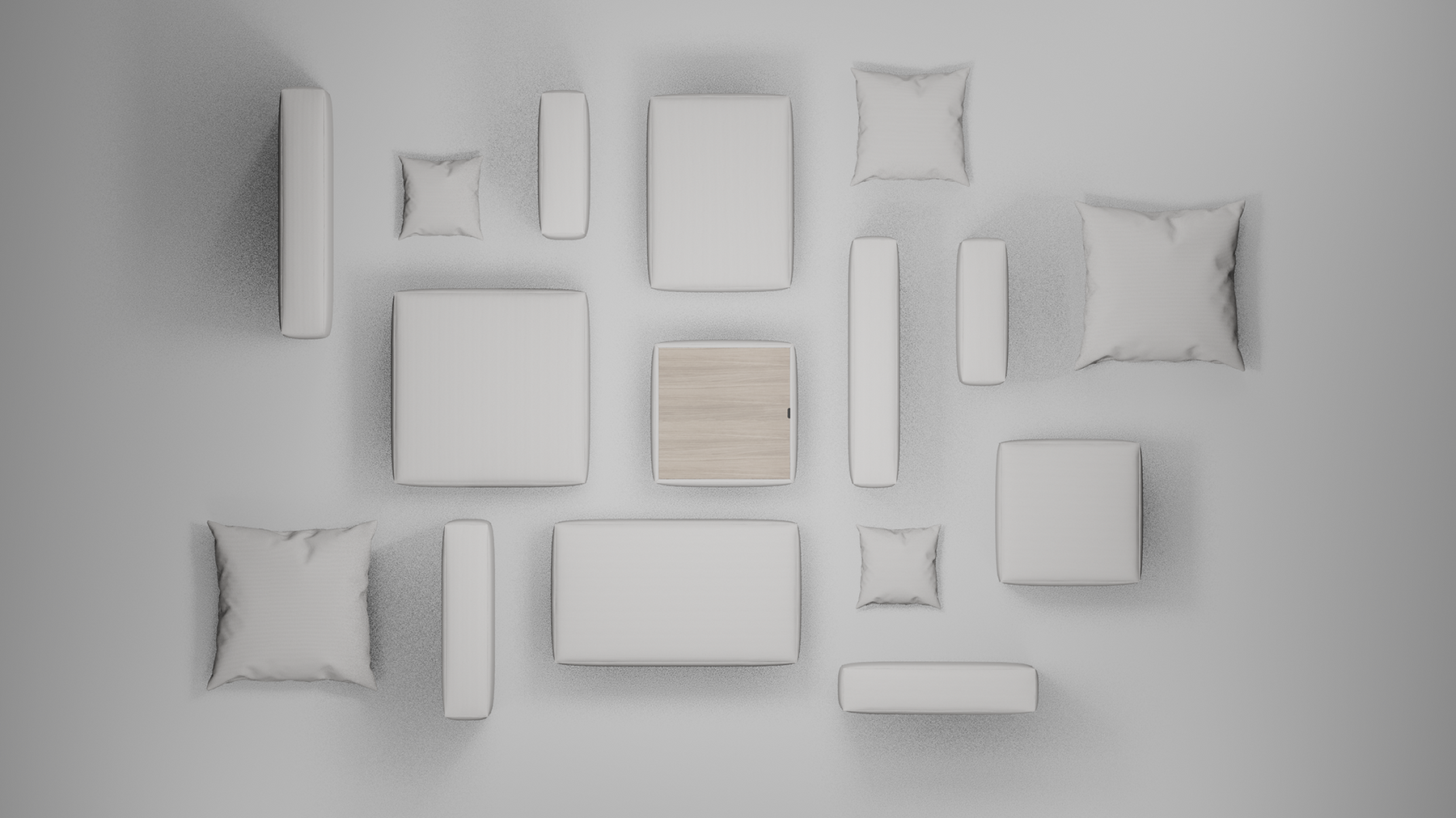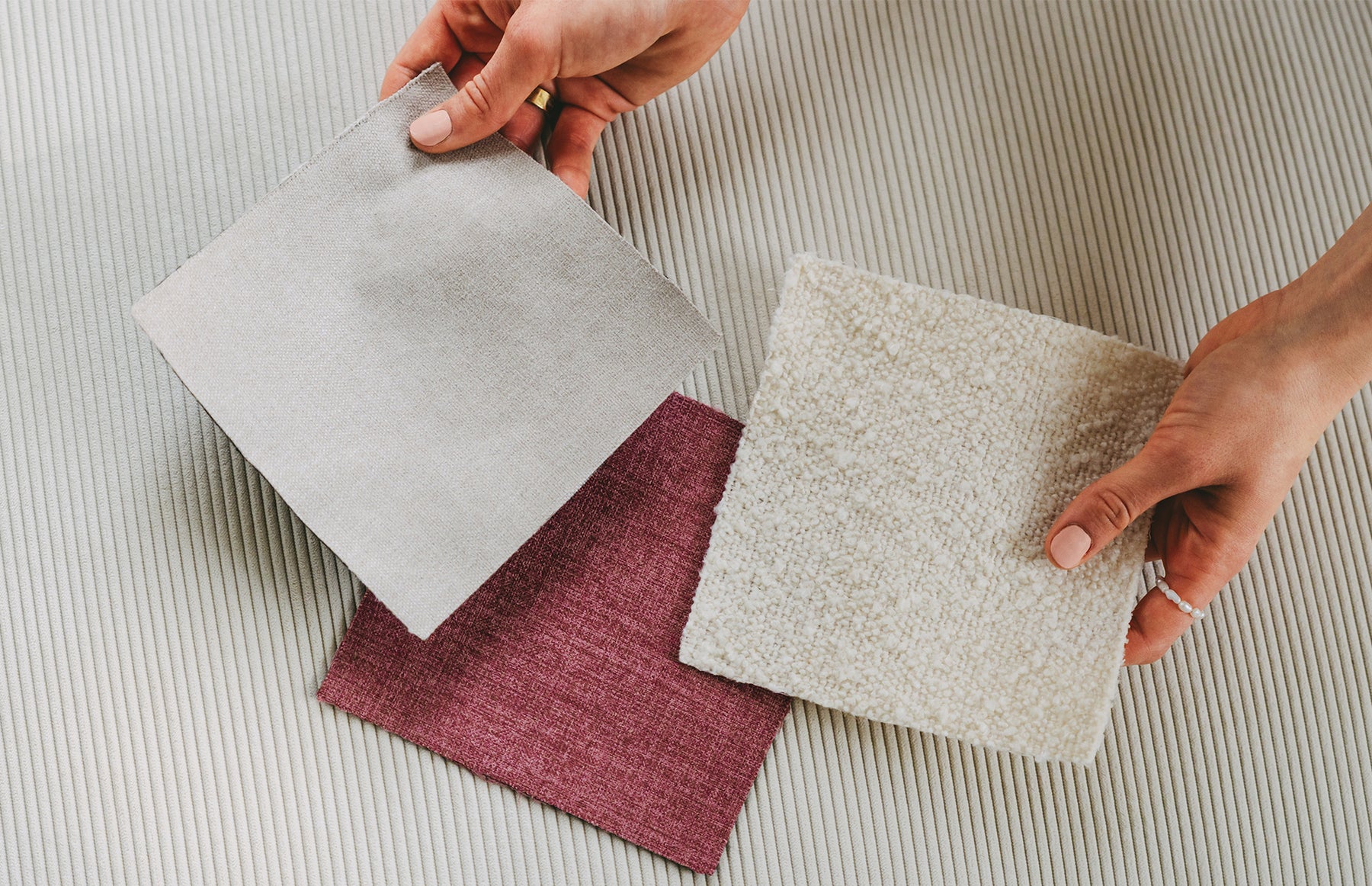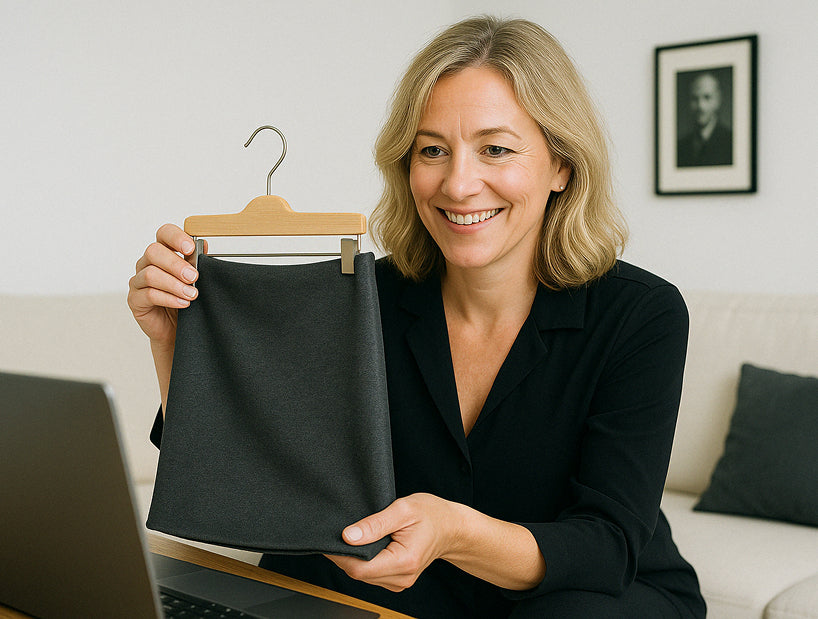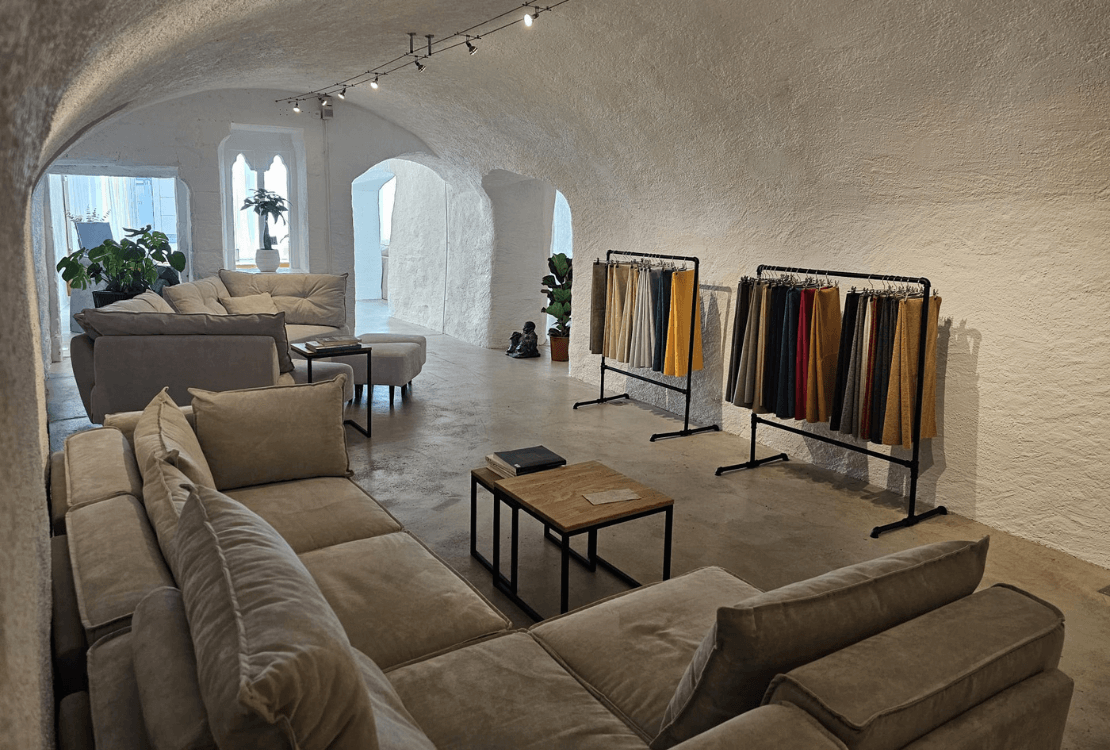Leather is a popular material for sofas for many people. But which type of leather is best suited for which sofa and what are the requirements of care and maintenance? In this article we compare the 9 most popular leather types for sofas and present your advantages and disadvantages.
Introduction to the different types of leather
Before we take a closer look at the individual leather types, we initially take an overview of the different types of leather. There is anilin leather, semi-leder leather, pigmented leather, nubucle leather, suede, synthetic leather, buffalo leather and velour leather.
The meaning of leather types for sofas
Choosing the right leather type for a sofa depends on various factors. This includes the optics, the feel, resistance and care requirements. Each type of leather has its own advantages and disadvantages and should therefore be chosen accordingly.
Leather types and their properties
In the following we present the individual leather types and explain their properties.
Anilin leather
Anilin leather is an open leather that is not pigmented. It is characterized by its natural look and feel. The leather is very breathable and pleasant on the skin. However, it is also very sensitive to stains and scratches.
An anilin leather sofa should therefore only be set up in rooms that are not heavily frequented. It should also be maintained regularly to keep the leather smooth.
Semi-leder leather
Semi leder is a leather that is slightly pigmented. This makes it more resistant to stains and scratches than anilin leather. However, it retains its natural look and feel.
A semi-leder sofa is well suited for families with children or pets, as it is more resistant than anilin leather. However, it should also be maintained regularly to keep the leather smooth.
Pigmented leather
Pigmented leather is a leather that is covered with a layer of pigment. This makes it very resistant to stains and scratches. However, it no longer has the natural optics and feel like anilin leather or semi-leder leather.
A sofa made of pigmented leather is well suited for heavily frequented rooms such as living room or offices. It is very easy to care for and does not have to be maintained regularly.
Nubucel leather
Nubucleder is a leather that was slightly sanded to create a velvety surface. It is very soft and pleasant on the skin. However, it is also very sensitive to stains and scratches.
A sofa made of nubucled leather So should only be set up in rooms that are not heavily frequented. It should also be maintained regularly to keep the leather smooth.
Suede
Wild leather is a leather that is made from the skin of animals such as deer or wild boar. It is very soft and pleasant on the skin. However, it is also very sensitive to stains and scratches.
A suede sofa should therefore only be set up in rooms that are not heavily frequented. It should also be maintained regularly to keep the leather smooth.
leatherette
Synthetic leather is a leather replacement that is made of plastic. It is very resistant to stains and scratches. However, it does not have the natural look and feel like real leather.
A synthetic leather sofa is well suited for families with children or pets, as it is more resistant than real leather. It is also very easy to care for and does not have to be maintained regularly.
Buffalo
Baffell leather is a leather that is made from the skin of buffalo. It is very resistant and durable. However, it does not have the natural optics and feel like anilin leather or semi-leder leather.
A buffalo leather sofa is well suited for heavily frequented rooms such as living room or offices. It is very easy to care for and does not have to be maintained regularly.
Suede
Velours leather is a leather that was slightly sanded to create a velvety surface. It is very soft and pleasant on the skin. However, it is also very sensitive to stains and scratches.
A velor leather sofa should therefore only be set up in rooms that are not very frequented. It should also be maintained regularly to keep the leather smooth.
Anilin leather
Anilin leather is characterized by its natural look and feel. It is a thin leather that originally received no or just a light surface treatment. This makes it particularly soft and cuddly. However, anilin leather is sensitive to dirt and liquids and requires regular care. Even abrasion traces can quickly become visible on anilin leather.
The leather is obtained from the skins of cattle, which usually come from Europe or South America. Due to its natural optics and feel, anilin leather is often used for high -quality furniture such as sofas and armchairs. The leather is also used in the fashion industry, for example for shoes and handbags.
The production of anilin leather is complex and requires a lot of know-how. The leather is colored in a drum, which means that the Color penetrates deep into the leather. This creates the natural look of the leather. Since the leather only receives a light surface treatment, the natural structure of the leather is preserved.
Properties of anilin leather
- natural optics and feel
- thin and soft
- sensitive to dirt and liquids
- tends to traces of abrasion
- breathable
The breathable leather ensures a pleasant seating climate and is therefore particularly popular in summer. However, anilin leather sofas should not be directly in the sun because the leather can fade.
Advantages and disadvantages of Anilin leather sofas
+ Natural optics and feel
+ soft and cuddly
+ breathable
- sensitive to dirt and liquids
- needs regular care
- tends to traces of abrasion
- more expensive than sofas made of synthetic leather or fabric
Despite the disadvantages, Anilin leather sofas are very popular. They are timeless and adapt to every furnishing style. With the right care, you can enjoy an anilin leather sofa for a long time.
Semi-leder leather
Semi leder is a high-quality material that is made from the best skins of cattle. It is similar to Anilin leather natural, but it has received a slight surface treatment. This makes it more resistant to dirt and liquids, but does not lose its original optics and feel. Semi-leder leather is a good choice for people who prefer a soft and natural-looking leather, but also value resistance.
The leather is produced by a special tanning, in which only natural materials are used. The surface of the leather is slightly sanded to remove irregularities. It is then provided with a thin protective layer that makes it more resistant to dirt and liquids.
Semi leder is particularly pleasant to touch and sit. It has a soft and smooth surface that feels comfortable. The natural look and feel of the leather gives your sofa a unique and timeless charm.
Properties of semi-leder leather
Semi-leder leather has many properties that make it a popular material for high-quality sofas. The most important properties include:
- natural optics and feel
- more resistant to dirt and liquids than anilin leather
- not so sensitive to abrasion traces
These properties make semi-leders a good choice for people who are looking for a high-quality and durable sofa.
Advantages and disadvantages of semi-leder leather sofas
Semi-leder leather sofas have many advantages, but also some disadvantages. Here are the most important advantages and disadvantages at a glance:
Advantages
- natural optics and feel
- more resistant to dirt and liquids than anilin leather
Disadvantages
- Regular care required
- not as resistant as pigmented leather
Despite some disadvantages, semi-leder is a good choice for people looking for a high-quality sofa that is both durable and beautiful. With the right care, you can make sure that your semi-ledge sofa stays in the best condition for many years.
Pigmented leather
Pigmented leather is one of the most popular leather types on the market. It is treated with dyes and a lacquer to achieve an even farbo surface. As a result, it looks less natural than anilin leather and semi-leder leather, but is more resistant to dirt, liquids and abrasion. Pigmented leather is a good choice for people who prefer an easy -care and resistant leather.
The treatment of pigmented leather offers many advantages. It is more resistant to stains and dirt, which makes it an ideal choice for families with children or pets. In addition, it is less susceptible to wear and abrasion, which means that it lasts longer than other types of leather.
Another advantage of pigmented leather is that it is available in many different colors. From classic colors such as black and brown to lively colors such as red and blue, there is something suitable for every taste.
Properties of pigmented leather
Pigmented leather has some unique properties that distinguish it from other types of leather. Here are some of the most important properties:
- Resistance to dirt, liquids and abrasion
- Less susceptible to wear and abrasion
- Available in many different colors
Advantages and disadvantages of pigmented leather sofas
If you want to buy a new sofa, pigmented leather is an excellent choice. Here are some advantages and disadvantages of pigmented leather sofas:
Advantages
- Easy to care and resistant to stains and dirt
- Durable and resistant to wear and tear and abrasion
- Available in many different colors
Disadvantages
- Less natural than anilin and semi-leder leather
- Less breathable than natural leather species
All in all, pigmented leather is an excellent choice for people who prefer an easy -care and resistant leather. With its many advantages and the large selection of colors, it is an excellent choice for every home.
Nubucel leather
Nubucleder is a high -quality leather that is often used for the production of sofas and other furniture. It is sanded to reach a velvety surface that gives it a unique look and feel. Compared to pigmented leather, Nubucel leather is a little more sensitive, but keeps its natural look and feel.
Nubucel leather is made from the top of the skin and is therefore naturally soft and cuddly. It is a good choice for people who prefer a natural look, but also pay attention to resistance.
If you buy a nubucleder sofa, you should consider that it regular care Need to maintain its beauty and durability. It is more sensitive than pigmented leather and therefore requires more attention and care.

Properties of Nubucleder
Nubucleder has a velvety surface that gives it a unique look and feel. It is naturally soft and cuddly and feels pleasant on the skin. Compared to pigmented leather, Nubucel leather is a little more sensitive, but keeps its natural look and feel.
Another advantage of nubucel leather is that it is breathable and can absorb and release moisture. As a result, it stays pleasantly cool and dry even in warm weather.
Advantages and disadvantages of Nubucated sofas
Nubucleder sofas have many advantages, but also some disadvantages that you should take into account when deciding on a new sofa. The advantages include the natural optics and feel, which are more resistant than anilin leather and semi-leder leather.
Another advantage of nubucated sofas is that they are breathable and can absorb and submit moisture. As a result, they remain pleasantly cool and dry even in warm weather.
A disadvantage of nubucated sofas is that you need regular care to maintain your beauty and durability. They are more sensitive than pigmented leather and therefore require more attention and care. However, if you are ready to take care of your nubucated sofa, you will be happy for many years.
Overall, Nubucel leather is an excellent choice for people who prefer a natural look and pay attention to resistance. With the right care, your nubucleder sofa will remain beautiful and functional for many years.
Our Livom Sofas is also available in Nubucel leather. Click here for our leather sofas:
Suede
Soda leather is made from animals such as deer or cattle. It is characterized by its velvety surface and is considered particularly soft and cuddly. However, suede is sensitive to dirt, liquids and abrasion.
Properties of suede
Sulered leather is a natural product and therefore has its characteristic properties. In addition to the velvety surface, it is particularly soft and cuddly. It adapts perfectly to the body and ensures a pleasant seating. However, suede is also more sensitive than other materials. It can quickly take stains and contaminants and is susceptible to abrasion.
Another advantage of suede is its breathability. In contrast to synthetic leather or other synthetic materials, suede can absorb and release suede. As a result, it remains pleasantly cool even in warm temperatures.
Advantages and disadvantages of suede sofas
Wild leather sofas have their own charm and are a real eye-catcher in many living rooms. They radiate cosiness and warmth and invite you to relax. Another advantage is your durability if you are well maintained.
However, it is important to be clear in advance about the disadvantages of suede sofas. As already mentioned, suede is more sensitive than other materials. It can quickly take stains and contaminants and is susceptible to abrasion. Therefore, with a suede sofa, you should pay particular attention to not spilling any liquids on it and cleaning it regularly.
Another disadvantage of suede sofas is their price. Since it is a high-quality natural product, suede sofas are often more expensive than others made of synthetic leather or fabric.
Ultimately, when choosing a sofa, it always depends on individual needs and preferences. If you are looking for a particularly soft and cuddly sofa and is ready, a little more time and effort in the care To invest, a suede sofa can be a good choice.
leatherette
Synthetic leather is a popular material for furniture, clothing and accessories. It is made from different materials such as polyurethane or PVC and is an alternative to natural leather varieties. It is easy to care for, resistant and visually hardly distinguishable from real leather. However, there are some differences between synthetic leather and real leather that should be considered.
Properties of synthetic leather
Synthetic leather has many positive properties. It is easy to care for and resistant to stains and scratches. In contrast to real leather, it is less susceptible to moisture and can therefore be cleaned more easily. In addition, it can hardly be distinguished from real leather and are available in many different colors and designs.
However, synthetic leather also has some disadvantages. It is less breathable than natural leather types, which means that it can get sweaty faster. In addition, if used for a long time, the surface of the synthetic leather can be peeled off or turns.
Advantages and disadvantages of synthetic leather sofas
Art leather sofas are a popular choice for many people. They are easy to care for and resistant to stains and scratches. In addition, they are often cheaper than real leather sofas and still offer a similar look. However, there are also some disadvantages here.
As already mentioned, synthetic leather is less breathable than real leather. This means that it can become sweaty faster and is uncomfortable to sit, especially in summer. The shelf life of synthetic leather sofas is often less than that of real leather sofas. The material can wear out or discolour faster, which means that the sofa has to be replaced faster.
Ultimately, it depends on individual needs and preferences whether you choose an artificial leather or real leather sofa. Both materials have advantages and disadvantages that should be weighed up before making a decision.
Buffalo
Baffell leather is a popular choice for furniture, as it has a robust surface and is more resistant to abrasion than other types of leather. However, it is less soft and cuddly than anilin leather or semi-leder leather.
Baffelled leather is made from the skin of water buffalo. These animals are located in Asia and Africa and are often used as work animals. The leather that is obtained from your skin is naturally thick and robust, which makes it an ideal choice for furniture that is heavily used.
The buffalo leather is treated during the tanning process to increase its durability and resistance to abrasion. It is also less susceptible to stains and dirt than other types of leather, which makes it a practical choice for families with children or pets.
Properties of buffalo leather
Baffell leather has a number of properties that make it a popular choice for furniture:
- Robust surface
- More resistant to abrasion than other types of leather
- Less susceptible to stains and dirt
- Practical choice for families with children or pets
However, there are also some disadvantages of buffalo leather that should be considered before you choose furniture made of this material.
Advantages and disadvantages of buffal leader sofas
Some advantages of buffalo leather sofas are:
- Resistant to abrasion
- Long durability
- Practical choice for families with children or pets
Some disadvantages of buffalo leather sofas are:
- Less soft and cuddly than anilin leather or semi-leder leather
- Can be more expensive compared to other types of leather
- Needed regular careto maintain its durability
Ultimately, the choice of leather for furniture depends on personal preferences and needs. If you are looking for a robust and resistant material that is also practical, buffalo leather could be the right choice for you.
Suede
Veloursleder is a very popular material for clothing, furniture and accessories. It is characterized by a velvety surface and is considered particularly soft and cuddly. Compared to pigmented leather or buffalo leather, suede is more sensitive to dirt, liquids and abrasion.
The material is obtained from the underside of the animal skin, which is why it is also called suede. It is a natural product and therefore particularly breathable and skin -friendly. Velor leather is often used for high -quality clothing such as jackets, coats and pants, as it is very pleasant to carry due to its soft surface.
Properties of Veloursleder
Veloursleder has some special properties that distinguish it from other types of leather:
- Spine surface: The sanding of the surface creates the characteristic velvety structure of the suede.
- Particularly soft and cuddly: Due to the fine fiber structure, suede is very soft and cuddly.
- More sensitive to dirt, liquids and abrasion: Due to the fine fiber structure, suede is more sensitive to external influences such as dirt, liquids and abrasion.
Advantages and disadvantages of Veloursleder-sofas
Veloursleder sofas are a popular choice for living room furniture. Here are some advantages and disadvantages of Veloursleder-sofas:
- Particularly soft and cuddly: Veloursleder sofas are very comfortable and cozy due to their soft surface.
- More sensitive to dirt, liquids and abrasion: As with all suede products, caution should also be taken for velor leather sofas to avoid dirt, liquids and abrasion.
- Noble appearance: Veloursleder sofas have a noble and luxurious appearance due to their velvety surface.
- Care: Due to their sensitivity, velour leather sofas need regular care and cleaning.
Overall, Velours leather is a very high quality and pleasant material, which, however, requires a certain caution due to its sensitivity. With the right care and attention, however, velour leather products can enjoy a long time.
Conclusion and recommendations
Choosing the right leather type for a sofa depends on various factors. If you prefer a natural look and feel and are ready to maintain the leather regularly, you are well advised with anilin leather or nubucated leather. Semi-leder leather is a good choice for people who pay attention to resilience, but do not want to do without a natural look and feel. Pigmented leather is suitable for those who prefer an easy -care and resistant leather. Synthetic leather is an inexpensive alternative to natural leather varieties. Baffelled leather and velor leather are suitable for people who pay attention to resistance to abrasion, but still want a soft surface.

The best types of leather for different requirements
- Natural optics and feel: Anilin leather or nubucle leather
- Resistance: semi-leder leather, pigmented leather, buffalo leather or velour leather
- Objectity: Pigmented leather or synthetic leather
Tips for maintaining and maintaining leather sofas
Regardless of the selected leather type, one should Leather sofa cared for regularly become to maintain its beauty and resistance. Here are some tips:
- Use only special leather care products and no conventional household cleaners.
- Do not expose the leather sofa to direct sunlight or heating sources.
- Avoid moisture on the sofa.
- Wipe the sofa regularly with a dry cloth to remove dust and dirt.
